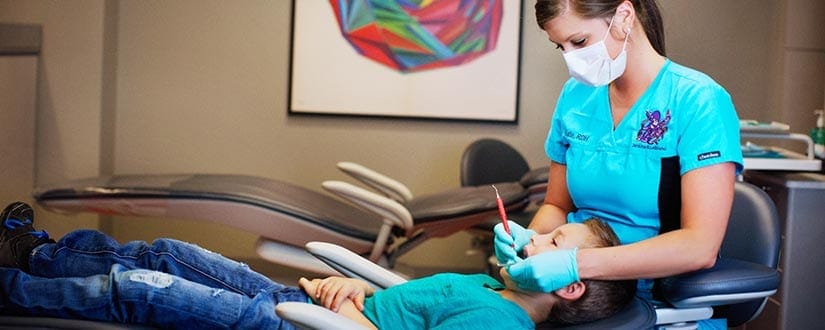Sedation dentistry for kids is endorsed by the American Dental Association and is an effective way to make many patients comfortable during their dental visit.
Before using a sedative or anesthetic, it is important to tell your pediatric dentist about any medications or medical treatments your child is receiving. Before administering any sedative or anesthetic, your pediatric dentist will talk to you about the process of sedation and pre- and post-sedation instructions, as well as any possible side effects you might experience.
Common Types of Sedation Dentistry for Kids
Sedation can range from the use of nitrous oxide to calm a patient to general anesthetics used to put patients to sleep.
Patients with dental phobia, low pain tolerance, major dental treatment, physical handicaps or strong gag reflexes may require sedation.
Procedures like fillings, crowns, bridges, root canals, extractions, cosmetic procedures and periodontal treatments often require sedation.
Nitrous Oxide (Laughing Gas)
Nitrous oxide, more commonly known as laughing gas, is as a conscious sedative used during a dental visit.
The gas is administered with a mixture of oxygen and has a calming effect that helps phobic or anxious patients relax during their dental treatment. Because it is a mild sedative, patients are still conscious and can talk to their pediatric dentist during their visit.
After treatment, the nitrous will turn off. Then, the dentist administers oxygen for 5 to 10 minutes to help flush any remaining gas. The effects wear off almost immediately.
Nitrous oxide rarely has side effects, although some patients may experience minor nausea and constipation. Your pediatric dentist will provide you with pre- and post-sedation instructions.
Oral Sedation (Conscious Sedation)
Oral sedation, also known as Conscious Sedation, is taken by mouth. It is used during treatment like getting a cavity filled. The child is awake and relaxed.
Often children will stay a short time after the treatment to make sure the recovery is complete.
IV Sedation
Pediatric dentists work together with outside sedation professionals, utilizing IV Sedation for children who may have several cavities, severe anxiety, disabilities or other indicators for deeper levels of sedation. Under constant monitoring, patients’ dental needs are effectively treated and they spend their brief period of recovery in a quiet, private room.
General Anesthesia
General Anesthesia is used for extensive procedures that will take a long time to complete and if several procedures need to be done at the same time.
This method allows the child to be asleep for the entire procedure. General anesthesia typically happens in a hospital or outpatient facility under the trained supervision of an anesthesiologist or an oral and maxillofacial surgeon.
